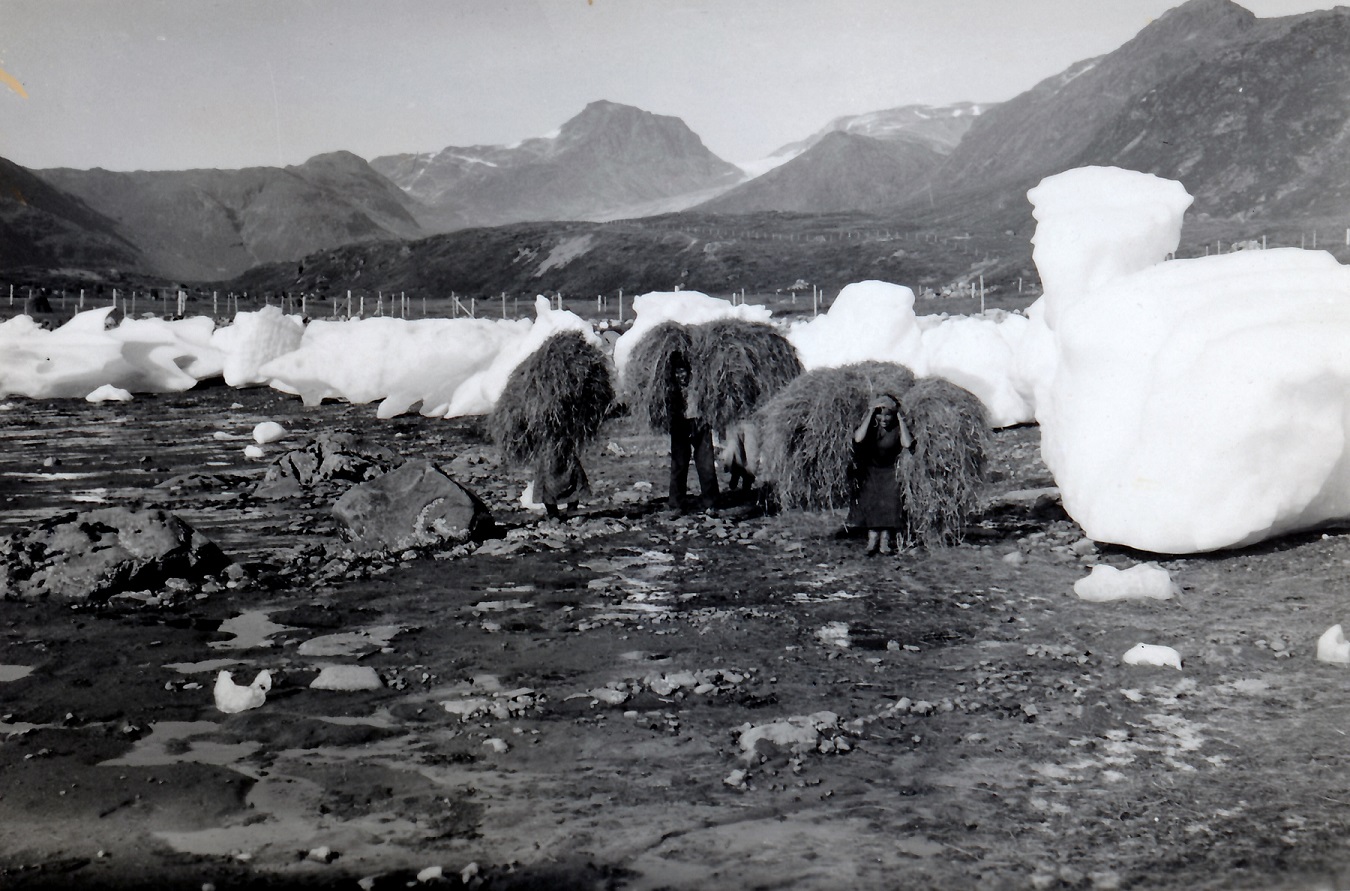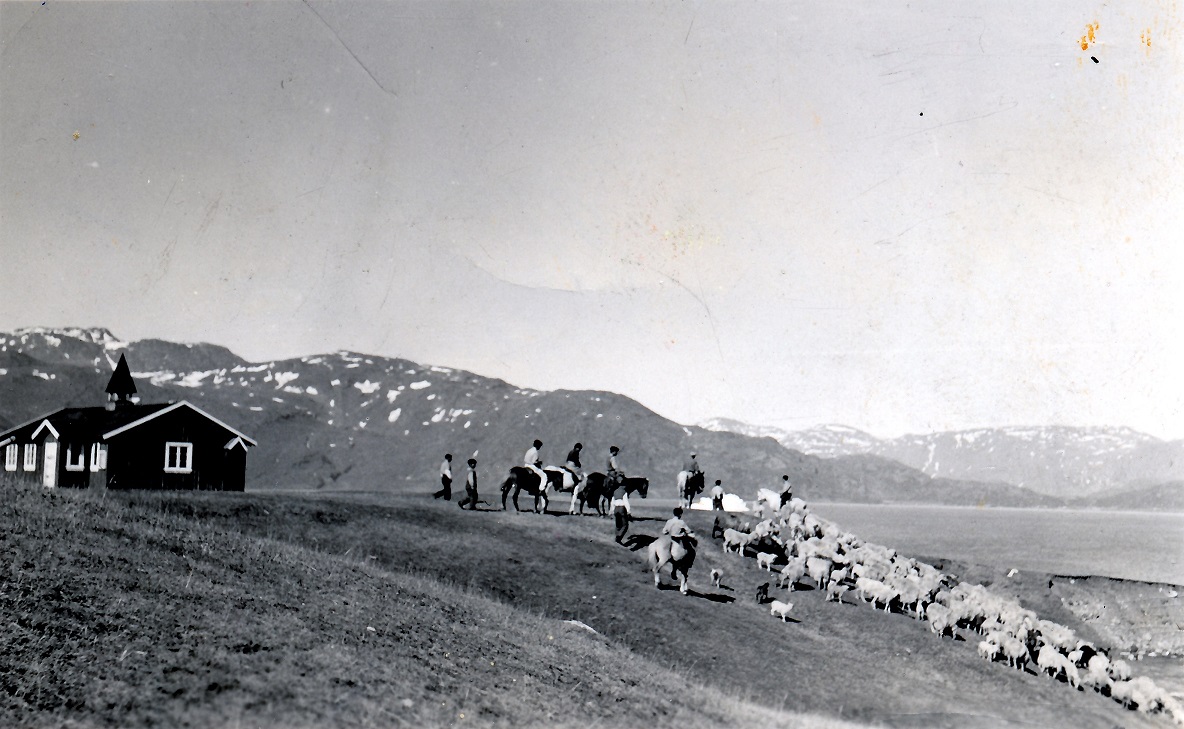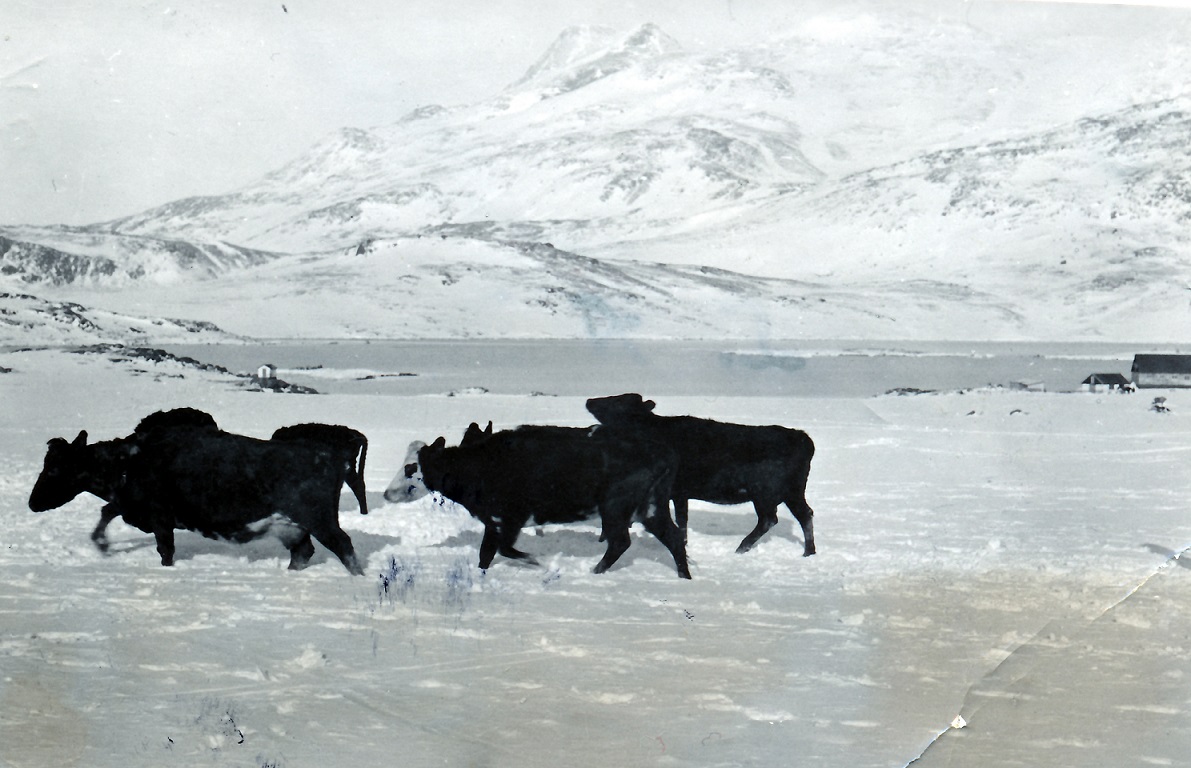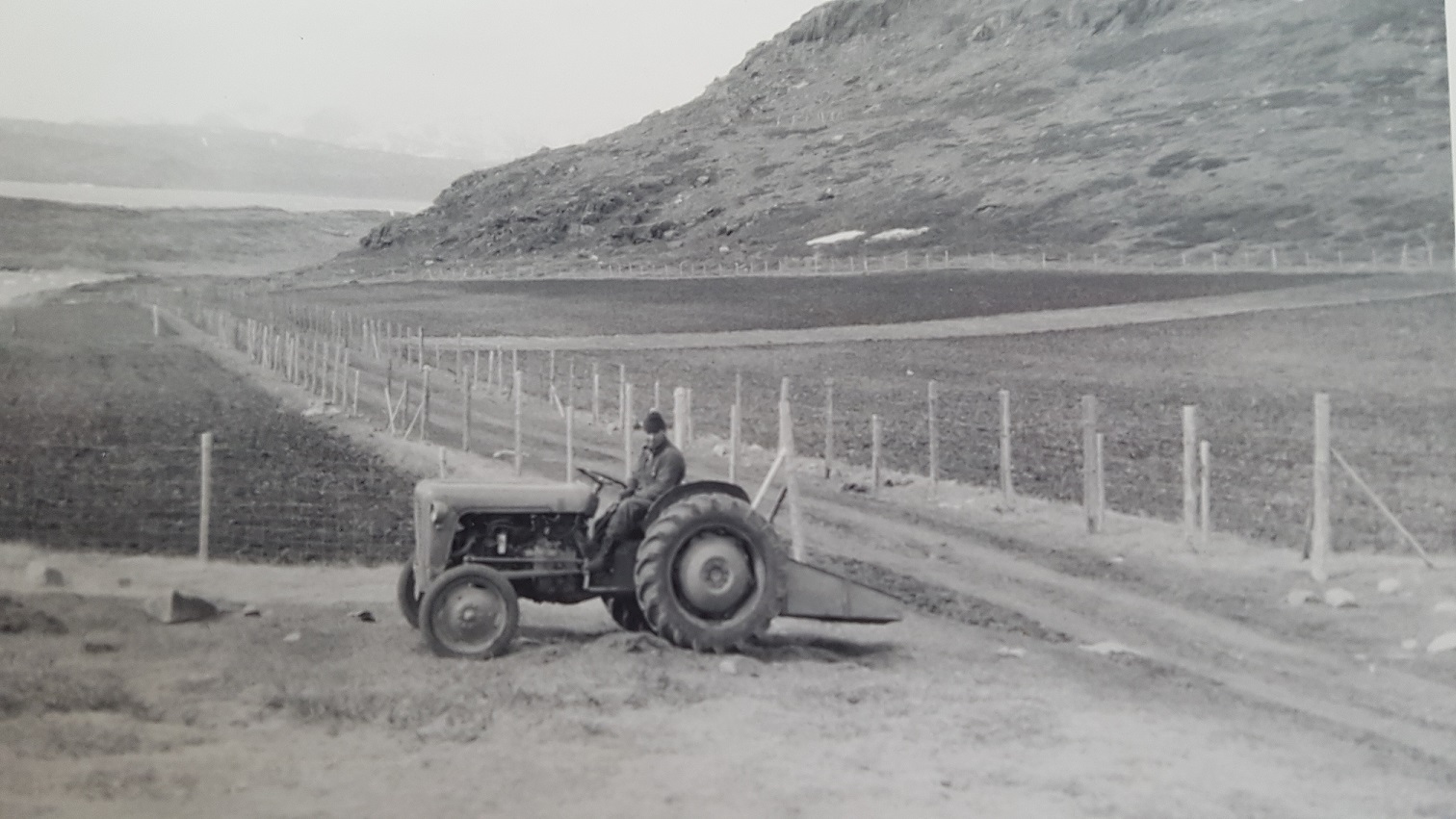Greenland is the first place agriculture was introduced in the Arctic. It was the Norse who brought their way of living with them and settled in the Arctic.
When the Norse disappeared, Greenland was without agriculture for approximately 300 years.
The modern farming started 60 years after Hans Egede colonized Greenland. It was the mechant Anders Olsen, who started farming when he retired. A few years prior he had started the colony of Julianehaab. He found the same farming conditions he knew from his homeland Norway.
After 125 years, mainly with cattle farming, the sheep was introduced to Greenland; it is today still the foundations for farming in Greenland.
South Greenland is the only place where Inuit stopped being hunters and became farmers.
Farming in Greenland from 1721
Colonial farming began soon after H. Egede’s arrival in the Nuuk fjord in 1721; and as colonies, trading posts, and mission stations were established along Greenland’s West Coast, European livestock and garden crops were reintroduced.
From the beginning it was a very subsidiary activity upon two domains: keeping a small number of livestock (cattle, horses, pigs, chickens, sheep, and quite a few goats); and small-scale gardening (cultivating chervil, cress, lettuce, radishes, parsley, leek, and turnips etc.). Both activities only served to supplement imports and locally recovered foods, as well as probably to provide colonists with “a taste of home”.
Between 1721-1906, there were only two places in Greenland were farming was practiced on a larger scale: at Igaliku/Garðar where A. Olsen had reestablished farming in 1780-1782 and the outpost of Narsaq – close to Norse Dýrnes – where cattle farming was taken up in the 1880’s.
There are few sources describing farming at Igaliku and Narsaq, but cattle seems to have been the primary livestock at both places, although at Igaliku there were also some sheep up until the mid 1800’s.
Before 1906, about 100 goats and 20 sheep were kept throughout Greenland.
Pre-modern farming – 1906-1976
The initiation of the period of pre-modern farming can accurately be set to 1906: this year reverend Jens Chemnitz in Narsaq Kujalleq/Frederiksdal - the southernmost part of the Eastern Settlement – received 2 rams and 9 lambs of Faroese stock, replenished in 1908 by another 8 sheep.
He received them on behest of the Danish governmental department concerned with Greenlandic affairs in order for him to conduct an actual sheep breeding experiment. This marked the onset a new era of farming in Greenland:
specialized sheep farming, at first modestly subsidized by the Danish government.
In 1915 a more comprehensive sheep farming experiment was instigated by government initiative: this year, Lt. L. Walsøe founded a sheep breeding station in Qaqortoq and brought in 175 sheep and 5 rams from northern Iceland.
The initial slow increase in the sheep population was due to the sheep breeding station first having to consolidate: in the beginning, the station would work as a stock reservoir and once sheep numbers were sufficiently high, animals should be distributed to able local Inuit at no immediate cost. In return, however, they were to repay the sheep breeding station an equal number of yearlings within 3 years. Also, the sheep breeding station was to educate local Inuit in farming and to aid in the construction of stables and barns.

Bringing hay home, Narsaq 1938-42, photo K.N. Christensen
This was the second expansive phase of pre-modern farming that can be described as Greenland’s second landnám: the reclaiming of principal Norse farmlands in the inner fjords of South Greenland.
In 1924 O. Frederiksen – a former apprentice at the sheep breeding station – moved to Qassiarsuk/Brattahlið with his family and 145 sheep to subsist solely on sheep farming.

Qassiarsuk 1940's, component area 1, photo Louis A. Jensen
By 1935, sheep numbers had risen to 6691 individuals at 24 farms in South Greenland.
The period 1924-1948 witnessed rapid growth in both the number of both sheep and -farmers in Greenland. This increase owed partly to the larger and more specialized farms established in the inner fjords, and partly to an upsurge in the number of sheep owners living further out the fjord, who combined sheep rearing with fishing and seal hunting. By 1947, they made up more than three thirds of the sheep owners in South Greenland.
The increase in such part-time sheep owners was undoubtedly stimulated by a need to be self-supporting in Greenland’s isolation from Denmark during World War II, as well as by generally favorable conditions for extensive sheep farming.
Combined fishermen/farmers by the early 1960’s constituted close to a third of all sheep owners in Greenland.
In 1966 the sheep numbers reached a peak of just below 48.000 ewes.
Cattle numbers were fairly stable up until World War II, around which time there was a minor intensification so as to be self supplied during Germany’s occupation of Denmark. Cattle numbers peaked in 1948 with 98 heads across Greenland and declined steadily until their, preliminary, disappearance in 1974.

Cows in Igaliku 1938, component area 2, photo Louis A. Jensen
Besides the classical breeds of domestic livestock, pre-modern farmers in Greenland also experimented with raising rabbits, geese, and reindeer, of which only reindeer production has proven successful.
Thus, from the critical winter of 1948/1949 it became increasingly clear that the persisting farming system was highly unstable and with the catastrophic winter of 1966/ 1967, pre-modern sheep farming in Greenland went into its third reorganizational phase.
Mechanized farming after 1976
The last catastrophic winter of 1975/1976 set in motion a number of measures that would speed up the transformation of sheep farming in Greenland into the modern enterprise it is today: in 1975, a sheep farmer education had been set up at Upernaviarsuk and in 1976, the sheep breeding station was converted into an independent institution.

Oluf Kleist, preparing fields Itilleq, component area 2, appr. 1960
In 1982, a 10-year developmental plan for sheep farming was outlined, which focused principally on stabilizing the sheep production by increasing winter fodder production and stable facilities, as well as initiating general modernization and mechanization of sheep farming by subsidizing it heavily.
Part of the modernization agenda after 1976 was also a number of extensive surveys and monitoring of pasture areas and their carrying capacity.
The effect of the modernization Greenlandic farming after 1976 is clearly apparent:
- the total sheep population has stabilized significantly and lacks the truly drastic sudden declines of the pre-modern period.
- the number of sheep owners has decreased continually, but seems to have found a fairly steady level after 1980 with very few active part-time farmers.
- the aggregate cultivated area has multiplied by six since 1977. The latter increase, however, has been achieved not primarily by extension of old Norse infields, but rather by claiming and draining meadows around the Norse farmsteads for cultivation.
Today (2020) in South Greenland there are 36 sheepfarms, one cattle farm and one reindeer farm. In Nuuk fiord there is one single sheep farmer.